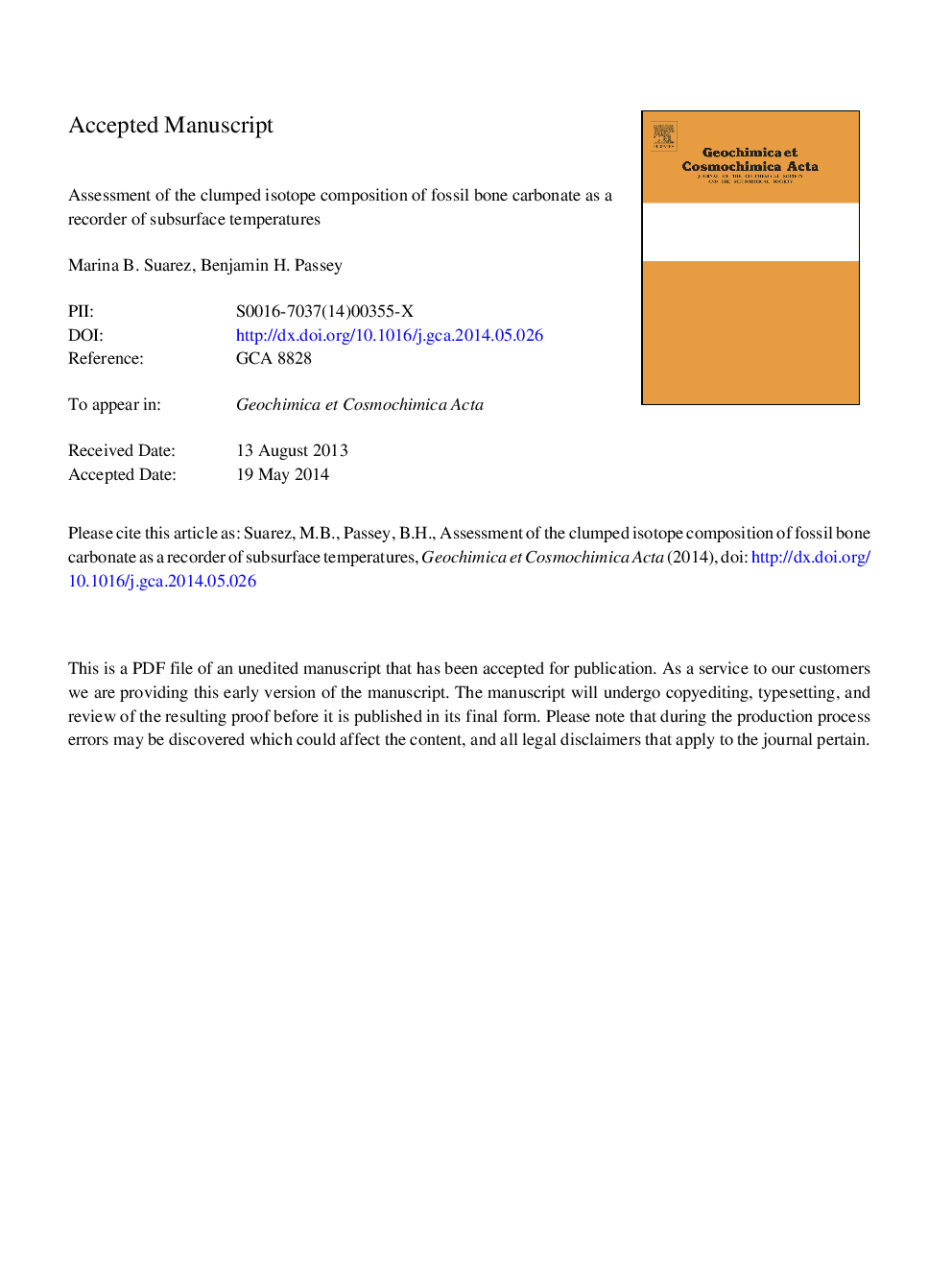| Article ID | Journal | Published Year | Pages | File Type |
|---|---|---|---|---|
| 6438353 | Geochimica et Cosmochimica Acta | 2014 | 59 Pages |
Abstract
Incomplete carbon and oxygen isotope exchange between bone carbonate and soil waters is also indicated for a set of late Miocene bone-enamel pairs from a sequence of stacked paleosols in northern China. Analysis of bone as old as Early Cretaceous shows that bone carbonate is susceptible to later diagenesis at elevated burial temperatures, although T(Î47) does not closely conform to maximum burial temperature, again suggesting partial recrystallization, or recrystallization during different stages of the burial and exhumation circuit. These results show that carbon, oxygen, and 'clumped' isotopes in fossil bone are capable of recording aspects of early diagenesis and the subsequent burial and exhumation history, but that distinguishing among different effects is challenging. However, clumped isotopes in bone can provide useful directional constraints on past temperatures. For example, T(Î47) values higher than body temperature necessarily place lower limits on maximum burial temperatures, and those lower than body temperature place upper limits on minimum fossilization temperatures.
Related Topics
Physical Sciences and Engineering
Earth and Planetary Sciences
Geochemistry and Petrology
Authors
Marina B. Suarez, Benjamin H. Passey,
